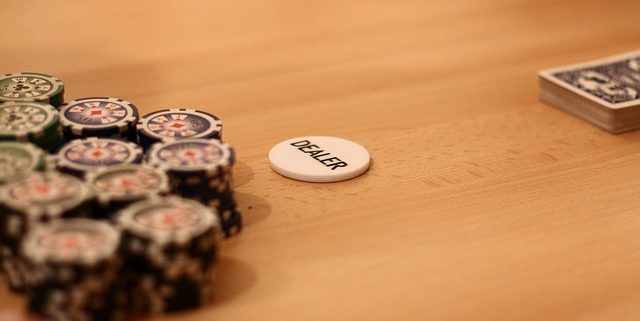POKER BEGINS AFTER THE FLOP
After the flop, the action begins and smart decisions are crucial to consistent winning. The flop is community information. Flop play in poker is about study, discipline, and most of all, sound strategy. We curated a few tips for post flop plays with the help of the guys at poker deposit pulsa, big thanks to them.
PLAY BIG TO WIN BIG
The first strategy involves confidence, whether it’s legitimate, having a strong hand, or potential strength, hoping the river creates a win. In either case, a strong hand at the flop calls for increasing the size of the pot. Bets and raises at this point help eliminate weak hands waiting for a miracle on the turn and/or river. A big pot at the river, while holding a strong hand, is the goal in poker. Increasing the size of the pot shows confidence, and that apparent strength may be necessary if the potential hand does not come through on the river. A miss on the river still leaves the opportunity to bluff for a big win. The decision to “play big” should be made early, especially with a strong hand and limited money.
PLAY POSITION
 Late position, being able to act last, allows for the collection of information on other players, observing who checks, how they bet, and perhaps read others and identify tendencies and “tells”. Acting first, being “out of position”, therefore requires an understanding that playing tight, in a more conservative manner, is a sound, safe strategy. Late position makes it easier to control the pot, staying in charge of betting, and allowing for the opportunity to bluff other players out, or claim the pot if others hesitated to bet. Playing “draws”, an incomplete hand, from a late position in an aggressive manner is recommended as they make great semi-bluffs given the possibility of making the hand on the river even if the opponent does not fold. And playing aggressively, of course, increases the pot size and leads to occasionally winning the pot uncontested.
Late position, being able to act last, allows for the collection of information on other players, observing who checks, how they bet, and perhaps read others and identify tendencies and “tells”. Acting first, being “out of position”, therefore requires an understanding that playing tight, in a more conservative manner, is a sound, safe strategy. Late position makes it easier to control the pot, staying in charge of betting, and allowing for the opportunity to bluff other players out, or claim the pot if others hesitated to bet. Playing “draws”, an incomplete hand, from a late position in an aggressive manner is recommended as they make great semi-bluffs given the possibility of making the hand on the river even if the opponent does not fold. And playing aggressively, of course, increases the pot size and leads to occasionally winning the pot uncontested.
PLAY MINDS
Maintaining calmness is important, avoiding the state of “tilt”, when a player allows a bad beat to affect mindset and bankroll. Awareness that other players are studying opponents, and thus limiting one’s emotions and physical reactions, is key. And while maintaining calm and avoiding the display of reaction to hands, successful players must also read the “tells” of opponents. Body movement and facial expressions are invaluable information at a poker table. For example, playing with jewelry may reveal a strong hand, while a nervous laugh can be the sign of distress. Looking directly at an opponent’s stack during a hand while counting one’s own chips is a clear sign of intimidation, but only careful study of the player and the circumstances will eventually show what the tendency means.





